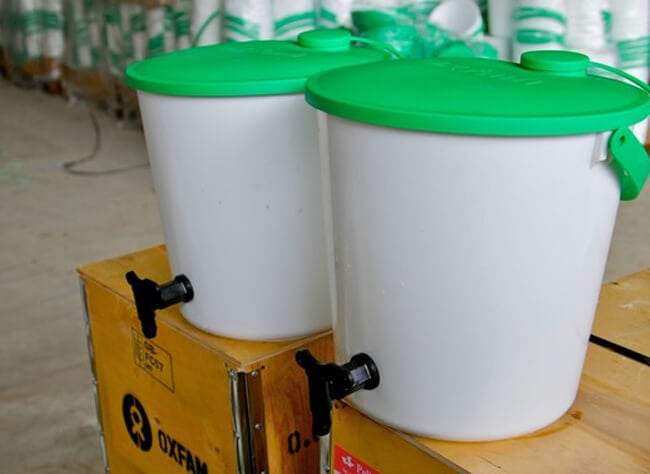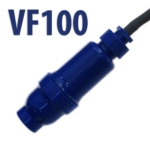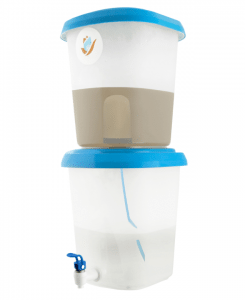
Agriculture
January 18, 2024
Oxfam-DelAgua Single Incubator Kit
Read SolutionImplemented by
Barry Lloyd, University of Surrey

Updated on January 10, 2024
·Created on July 11, 2016
The Oxfam Bucket is a 14 L container for safe water storage.
Oxfam bucket is a 14L safe water storage option for individuals and households. The bucket has a lid and water from it is withdrawn using an integrated tap.
Target SDGs
SDG 6: Clean Water and Sanitation
SDG 3: Good Health and Well-Being
Market Suggested Retail Price
$3.00
Target Users (Target Impact Group)
Household
Distributors / Implementing Organizations
Oxfam
Competitive Landscape
Direct competitors include Aquatainer 10L Collapsible and CDC SWS Container.
Regions
Worldwide
Manufacturing/Building Method
This product is mass produced in England from virgin HDPE high density polyethylene (body of the bucket, lid and cap) and virgin LDPE low density polyethylene (handle) and shipped unassembled.
Intellectural Property Type
Open-source
User Provision Model
NGO users purchase the product from Oxfam and distribute to end-users.
Distributions to Date Status
More than 15,000 in 2015-16
Container volume (L)
14 L
Integrated dispensing tap (yes/no)
Yes
Handle for carrying (yes/no)
Yes
Material
High-density polyethylene (HDPE)
Design Specifications
The Oxfam Bucket is non-collapsible, heavy-duty, 14L with a tight fitting lid, handle, and attached clip-on cap. It is UV-resistant and safe for food and water storage. Multiple units are stackable and can be carried by hand. They are available with or without the tap.
The top diameter is 310 mm and the height it 330 mm. Other specific product schematics are available in the Oxfam Bucket specs sheet
Technical Support
Technical support provided by Oxfam
Replacement Components
Not available
Lifecycle
Unknown
Manufacturer Specified Performance Parameters
Intended to be a form of Safe Water Storage.
Vetted Performance Status
The Oxfam bucket is tested for 2m drop test.
Safety
There are no known hazards with this product
Complementary Technical Systems
None
Academic Research and References
A. Ercumen, A. M. Naser, L. Unicomb, B. F. Arnold, J. M. Colford Jr, and S. P. Luby, “Effects of source- versus household contamination of tubewell water on child diarrhea in rural Bangladesh: a randomized controlled trial,” PLoS One, vol. 10, no. 3, p. e0121907, 2015.
Oxfam, “8 things that make our bucket life-changing,” Oxfamamerica.org. [Online]. Available: https://www.oxfamamerica.org/explore/stories/8-things-that-make-our-bucket-life-changing/
“About us,” Oxfamamerica.org. Available: https://www.oxfamamerica.org/about-us/
Oxfam, “9 things on Oxfam’s ‘bucket list’ for World Water Day – Views & Voices,” Available: https://views-voices.oxfam.org.uk/2016/03/9-things-on-oxfams-bucket-list-for-world-water-day/
“Goal 6,” Sdgs.un.org. Available: https://sdgs.un.org/goals/goal6
J. Bucket, “CORE RELIEF ITEMS,” Nrsrelief.com. Available: https://www.nrsrelief.com/wp-content/uploads/2023/06/Jerry-bucket-Oxfam-09062023.pdf
“Contact us,” Oxfamamerica.org. Available: https://www.oxfamamerica.org/about-us/contact-us/
CDC, “Household Water Treatment,” 20-Oct-2022. Available: https://www.cdc.gov/healthywater/global/household-water-treatment.html?CDC_AA_refVal=https%3A%2F%2Fwww.cdc.gov%2Fsafewater%2Fstorage.html
Oxfam, “8 things that make our bucket life-changing,” Oxfamamerica.org. Available: https://www.oxfamamerica.org/explore/stories/8-things-that-make-our-bucket-life-changing/
Compliance with regulations
None
Evaluation methods
Oxfam evaluates the impact of their WASH methods, including safe water storage.
Other Information
See research & standards for:
Oxfam’s article on this product and their blog.
Academic articles on general safe water storage containers:

Agriculture
January 18, 2024
Implemented by
Barry Lloyd, University of Surrey

Agriculture
January 10, 2024
Implemented by
NRSRelief

Agriculture
January 2, 2024
Implemented by
Village Water Filters, Inc.

Agriculture
January 2, 2024
Implemented by
Water is Life

Agriculture
December 29, 2023
Implemented by
LifeStraw

Agriculture
January 4, 2024
Implemented by
Basic Water Needs

Agriculture
January 2, 2024
Implemented by
wateroam

Agriculture
December 27, 2023
Implemented by
Aqua Clara International

Agriculture
January 10, 2024
Implemented by
Dr. David Manz, University of Calgary

Agriculture
January 11, 2024
Implemented by
Kohler
Have thoughts on how we can improve?
Give Us Feedback
Plant based polyethylene is currently only available from Braskem in Brazil at a price premium. This material is not biodegradable. As far as I’m aware of, plant based polypropylene is not commercially available yet, neither are plant based pressure sensitive adhesives which are needed top attache the pad to the underwear.
Considering the sparsity of bathroom facilities (or other locations to change the pads outside the home) in India, I would recommend to design pads that can be used at least for 12 hours. The user can put on a pad in the morning and change it at night, both in the privacy of her home.
•Why was the jerrycan chosen over the cube? Curiosity, not saying it shouldn’t have been
•Given the large difference between “market price†($330) and NGO price ($65-80), I wonder what is intended by market price, since the majority of users will not be purchasing at true market price, because the real market is NGOs. Would go with the NGO price for this, since the prices for ACI, M-Drop and Kouzin Dlo are more along these lines.
– “Target product user” for the Oxfam bucket says community as well as household – though I
would imagine that all three of these should have the same end user (which I imagine is a household)
– This is not product-specific, but there is a recent study that looked at diarrheal disease reduction from chlorination and safe water storage vs. safe storage only vs. a control. The findings were that both chlorination + safe storage, and safe storage alone both reduced diarrheal disease in users, with no significant difference between the two. Here is the source:
Ercumen A., Naser A. M., Unicomb L., Arnold B. F., Colford Jr. J. M., Luby S. P. 2015 Effects of Source- versus Household Contamination of Tubewell Water on Child Diarrhea in Rural Bangladesh: A Randomized Controlled Trial. Plos One, 10(3).
and a link: http://journals.plos.org/pl…